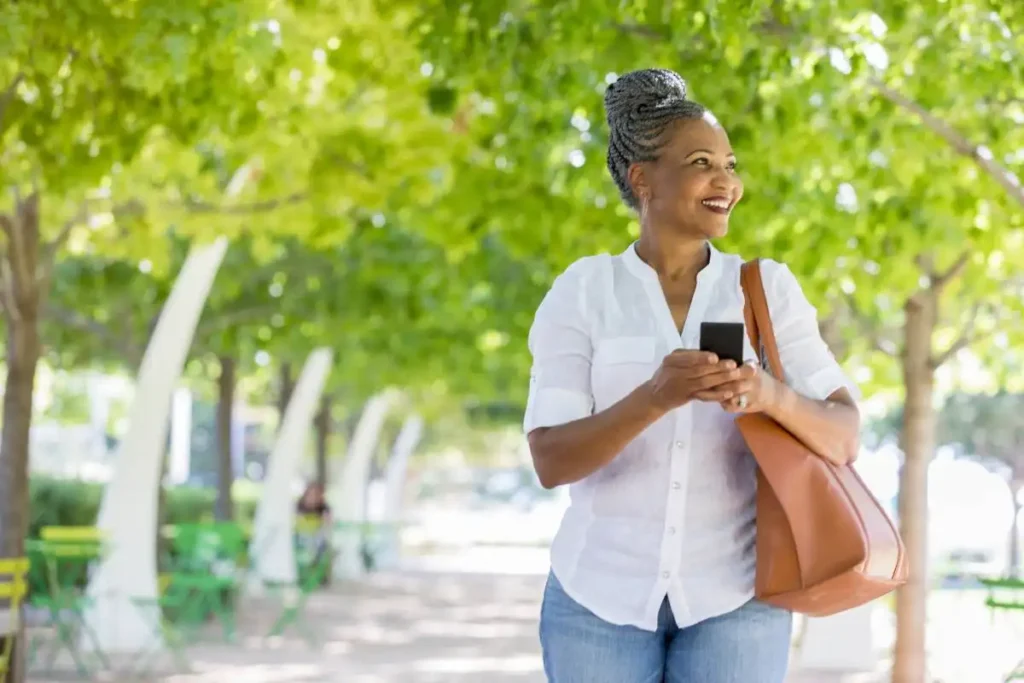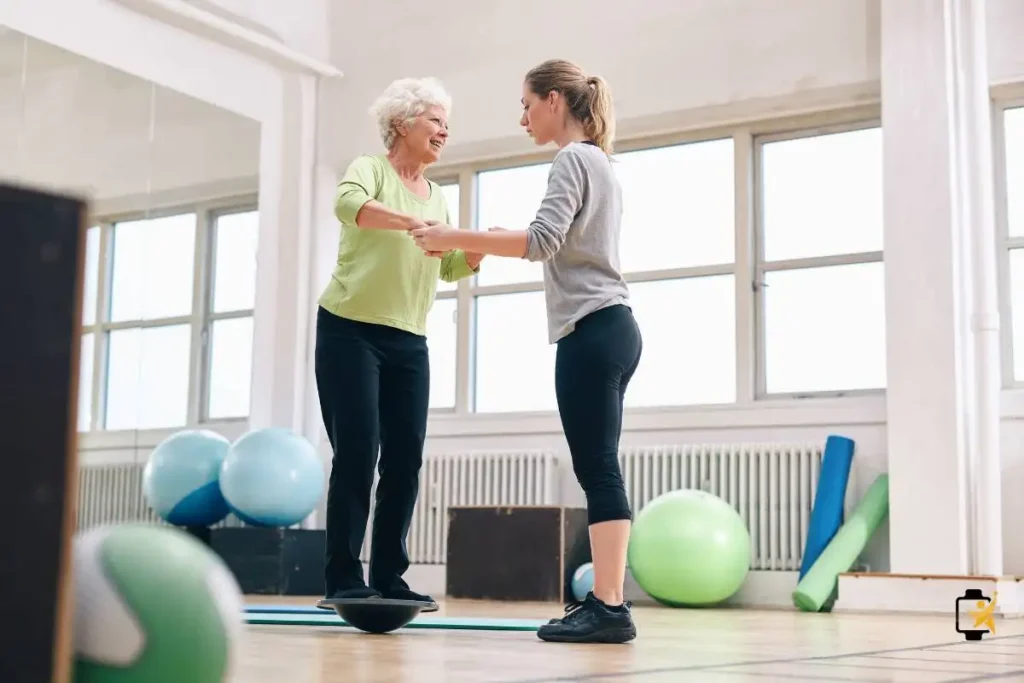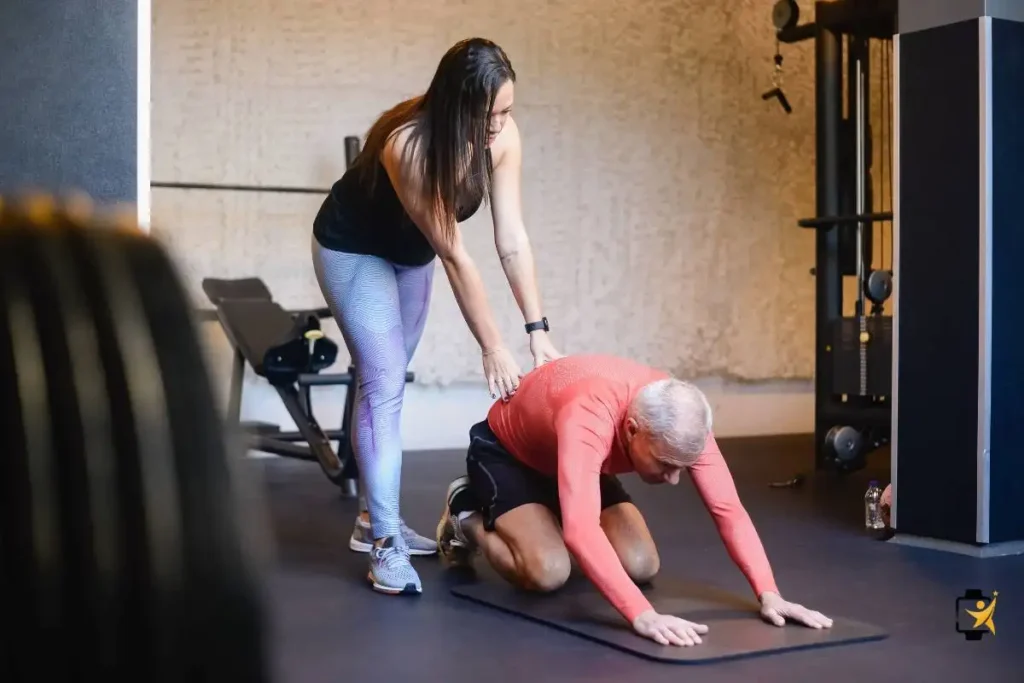We all know walking’s good for us, but do you know just how good? Regular strolls can boost our heart health, keep our bones strong, and even lift our mood. It’s a simple activity that packs a powerful punch for our overall well-being.
Walking helps maintain our balance and coordination, reducing the risk of falls – a big concern as we age. Plus, it’s a great way to socialize, whether we’re joining a walking group or just chatting with neighbors we meet along the way.
The best part? Walking is accessible to almost everyone. We don’t need fancy equipment or a gym membership. Just a comfortable pair of shoes and we’re good to go. And with walking apps, we can make our walks even more effective and enjoyable.
How Technology is Making Exercise More Accessible
Remember when tracking our fitness meant jotting down notes in a journal? Those days are long gone. Now, our smartphones can do all the heavy lifting for us. Walking apps use our phone’s built-in sensors to count our steps, measure distance, and even track our heart rate in some cases.
These apps aren’t just about numbers, though. They’re designed to motivate us, set realistic goals, and celebrate our achievements. Some even turn walking into a game, making exercise feel less like a chore and more like fun.
For those of us who might be less tech-savvy, don’t worry. Many of these apps are designed with simplicity in mind. Large, easy-to-read displays and straightforward interfaces make them user-friendly for all ages.
Overcoming Common Barriers to Exercise in Later Life
Let’s face it, starting a new exercise routine can be daunting, especially as we get older. We might worry about overdoing it or not knowing where to begin. Walking apps can help address these concerns.
Many apps offer beginner-friendly programs that start slow and gradually increase intensity. They can remind us to warm up, cool down, and stay hydrated. Some even provide tips on proper walking form to prevent injury.
For those with mobility issues, certain apps offer seated exercises or ways to track movement even if we can’t walk long distances. The key is finding an app that fits our individual needs and abilities.
Features to Look for in Walking Apps for Seniors
Not all walking apps are created equal. When choosing an app, we want to look for features that cater to our specific needs and preferences. Let’s explore what makes a walking app truly senior-friendly.
User-Friendly Interface and Large Text Options
The last thing we need is an app that’s more frustrating than helpful. A good walking app for seniors should have a clean, uncluttered interface with large, easy-to-read text. Buttons should be big enough to tap without fumbling, and navigation should be intuitive.
Some apps offer customizable displays, allowing us to adjust text size or color contrast. This can be a game-changer for those with vision impairments. Look for apps that prioritize accessibility features to ensure a smooth user experience.
Audio feedback is another helpful feature. Apps that provide voice prompts can guide us through our walks without us having to constantly check our phones. This keeps us focused on our surroundings and reduces the risk of tripping or falling.
Accurate Step Counting and Distance Tracking
The heart of any walking app is its ability to accurately count our steps and measure distance. While no app is 100% perfect, we want one that comes close. Look for apps that use your phone’s built-in sensors or can connect to wearable devices for more precise tracking.
Some apps allow us to calibrate the step counter to our specific walking style. This can improve accuracy, especially if we have a unique gait or use a walking aid. The ability to track indoor walking is also a plus, particularly on those days when the weather keeps us inside.
Distance tracking is equally important. It’s satisfying to see how far we’ve walked, whether it’s around the block or across town. Some apps even let us set distance goals and celebrate when we reach them.
Goal Setting and Progress Tracking Features
Setting goals gives us something to strive for, and tracking our progress keeps us motivated. Look for apps that allow us to set personalized goals based on our fitness level and health objectives. These might include daily step counts, weekly distance targets, or even weight loss goals.
The best apps provide visual representations of our progress. Graphs, charts, or virtual rewards can make it easy to see how far we’ve come. Some apps even offer milestone celebrations, giving us a pat on the back when we reach a new personal best.
Progress tracking isn’t just about numbers, though. Look for apps that allow us to log how we feel after each walk. This can help us identify patterns and adjust our routine for optimal health benefits.
Top Walking Apps Tailored for Older Adults
Now that we know what to look for, let’s explore some of the best walking apps designed with seniors in mind. These apps combine user-friendly features with powerful tracking capabilities to support our fitness journey.
1. Pacer
Pacer is more than just a step counter. It’s a full-fledged fitness app that’s gained popularity among older adults for its simplicity and effectiveness. The app automatically tracks our steps, distance, and calories burned throughout the day.
One of Pacer’s standout features is its community aspect. We can connect with friends or join groups for added motivation and friendly competition. The app also offers guided workouts and health articles tailored to seniors.
Pacer’s interface is clean and easy to navigate, with large, readable text. It syncs with many popular health apps and devices, making it a versatile choice for those who want to track multiple aspects of their health.
2. Map My Walk
If we enjoy exploring new walking routes, Map My Walk might be the perfect companion. This app not only tracks our walks but also helps us discover new paths in our neighborhood or when traveling.
Map My Walk uses GPS to record our route, pace, and elevation changes. We can save our favorite routes or share them with friends. The app also provides audio feedback during our walks, keeping us informed without having to constantly check our phones.
For those of us who like a bit of friendly competition, Map My Walk offers challenges and the ability to connect with other walkers. It’s a great way to stay motivated and discover new walking buddies in our area.
3. Silver Sneakers GO
Silver Sneakers GO is specifically designed for older adults, offering a range of exercise programs including walking. The app provides guided audio workouts, making it feel like we have a personal trainer right in our ears.
One of the app’s strengths is its focus on safety and proper form. It offers tips and reminders to help prevent injury and get the most out of our walks. The app also includes balance exercises and strength training routines to complement our walking program.
Silver Sneakers GO is free for members of participating health plans, making it an excellent option for those looking to save money while staying fit. Even for non-members, the app offers valuable resources and tracking features for seniors.
Maximizing the Benefits of Walking Apps
Having a great walking app is just the first step. To really reap the rewards, we need to use these tools effectively. Let’s explore some strategies to get the most out of our walking apps and boost our fitness journey.
Integrating Walking Apps into Daily Routines
The key to success with any fitness program is consistency. Walking apps can help us build regular walking habits by seamlessly integrating them into our daily lives. Start by setting realistic daily step goals. Maybe it’s 5,000 steps to begin with, gradually increasing as we get more comfortable.
Use the app’s reminders to prompt us to move throughout the day. Many apps can be set to give us a gentle nudge if we’ve been inactive for too long. This can be especially helpful if we have a sedentary lifestyle or spend a lot of time sitting.
Try to make checking the app part of our daily routine. Maybe we look at our progress with our morning coffee or before bed. This regular check-in can help keep us accountable and motivated.
Using Social Features for Motivation and Accountability
Many walking apps offer social features that can add a fun, motivational element to our fitness journey. Connecting with friends or family members who also use the app can create a sense of friendly competition and mutual support.
Some apps allow us to join challenges or virtual walking groups. These can be great for setting short-term goals and pushing ourselves a little harder. Plus, it’s always more fun to achieve something as part of a team.
Don’t underestimate the power of sharing our progress. Whether it’s with friends on the app or on social media, celebrating our achievements can give us a motivational boost and inspire others to get moving too.
Combining Walking Apps with Other Health Tracking Tools
Walking apps can be even more powerful when used in conjunction with other health-tracking tools. Many apps can sync with smart scales, blood pressure monitors, or sleep trackers to give us a more comprehensive view of our health.
Consider using a food-tracking app alongside our walking app. This can help us balance our calorie intake with the calories we’re burning through walking, which is especially useful if weight management is one of our goals.
Some walking apps can also integrate with smartwatches or fitness bands. This can provide more accurate step counting and allow us to track our heart rate during walks, giving us a better picture of our exercise intensity.
Safety Considerations When Using Walking Apps
While walking apps can be incredibly beneficial, it’s important to use them safely. As seniors, we need to be mindful of our physical limitations and the potential risks associated with outdoor exercise. Let’s look at some key safety considerations.
Your Physical Limitations
Before we dive into a new walking routine, it’s crucial to understand our own physical capabilities. Everybody is different, and what works for one person might not be suitable for another. If we have any existing health conditions or concerns, it’s always best to consult with our healthcare provider before starting a new exercise program.
Many walking apps allow us to input our health information and set personalized goals. Take advantage of these features to ensure the app’s recommendations align with our individual needs. Remember, it’s okay to start slow and gradually increase our activity level over time.
Listen to our bodies as we walk. If we experience pain, dizziness, or unusual shortness of breath, it’s important to stop and rest. No step goal is worth risking our health over. The best walking apps will encourage us to push ourselves gently, not overexert.
Privacy and Data Security Concerns
In today’s digital age, we need to be mindful of our personal information. Walking apps often collect data about our location, health metrics, and daily habits. While this information is used to provide us with valuable insights, we should be aware of how it’s being stored and used.
Take some time to read through the app’s privacy policy. Look for apps that have clear, easy-to-understand terms about data collection and use. Many reputable apps allow us to control what information we share and with whom.
Be cautious about sharing our location publicly through the app. Some apps have features that allow others to see our walking routes. While this can be fun for connecting with friends, make sure we’re comfortable with the level of information we’re sharing.
Tips for Safe Outdoor Walking with App Guidance
Walking apps can be great motivators, but they shouldn’t distract us from our surroundings. When walking outdoors, our safety should always be the top priority. Here are some tips to keep in mind:
Stay aware of our environment. Don’t get so focused on the app that you forget to look out for obstacles, traffic, or uneven surfaces. Consider using apps that offer audio guidance, allowing us to keep our eyes on the path ahead.
Wear appropriate footwear and weather-suitable clothing. No matter what goal the app sets for us, make sure we’re dressed comfortably and safely for our walk.
Carry a form of identification and emergency contact information. Some walking apps allow us to store this information within the app itself, which can be helpful in case of emergencies.





